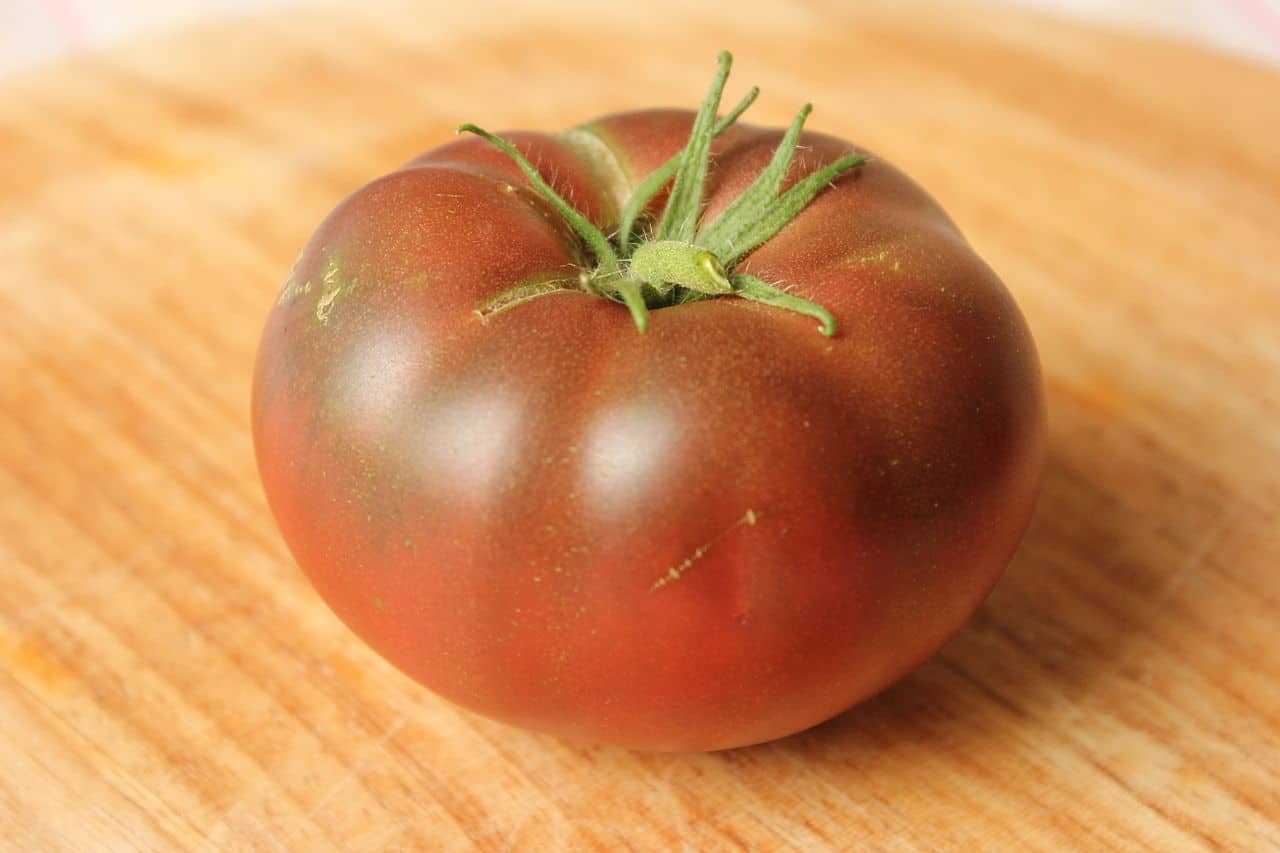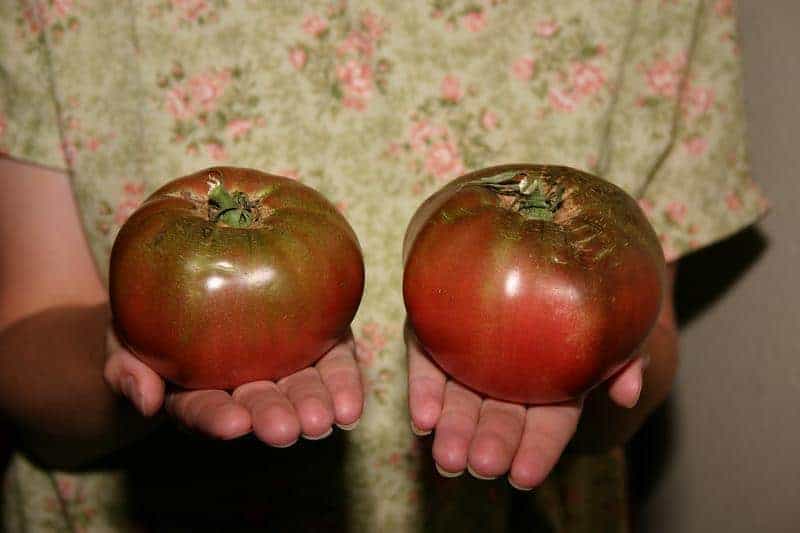Black, purple, bruised tomatoes are all the rage nowadays, with gardeners looking to broaden their cultivated horizons with unique varieties of vegetables.
If you’ve looked into these dark tomatoes, you have almost certainly noticed two varieties that keep coming up: the Cherokee Purple and the Black Krim.
The Cherokee Purple is an heirloom tomato named after the Native American Cherokee tribe, who had been cultivating it since the 19th century. It was rediscovered by the general public in the 1990s and since then has become one of the most sought after purple tomato for gardeners. The Black Krim is an old Ukrainian heirloom which also entered the US market around the same time as the Cherokee Purple.
They both appear to look similar, but have a few key differences that set them apart.
| Cherokee Purple | Black Krim | |
|---|---|---|
| Type | Beefsteak; indeterminate | Beefsteak; indeterminate |
| Color | Dark red with green/brown shoulders | Dark red with green/brown shoulders |
| Size | 8 to 16 oz (0.23 to 0.45 kg) | 8 to 12 oz (0.23 to 0.34 kg) |
| Days to Maturity | 80-85 days | 80 days |
| Flavor | Intense, rich, smoky | Balanced; tart, rich, sweet |
| Get seeds: | Baker Creek, Burpee, OSC Seeds (Canada), Plants of Distinction (UK) | Baker Creek, Burpee, West Coast Seeds (Canada), Seed Parade (UK) |
On this page:
Color and Growth Habit
What first draws many gardeners to Cherokee Purple and Black Krim tomatoes is their color. They have deep red flesh, almost burgundy with their purple hues.
Despite their different names, they share roughly the same color. Both are also noted by their green/brown shoulders (top of the tomato), which remain even after the tomato is fully ripe, in contrast to most tomatoes which ripen to one color.
Both are also indeterminate tomatoes, which means they keep growing and producing tomatoes all season long until the first frost kills them. They both require staking or trellising, and it’s recommended to prune the suckers regularly to keep them from growing into an unmanageable bush.

Type, Size, and Shape
Here is where you start to see some differences between Cherokee Purple and Black Krim tomatoes. Both are slightly flattened, oblong shaped beefsteak tomatoes, but Cherokee Purple tomatoes are often larger than Black Krim tomatoes.
Black Krim plants will typically yield 8 oz tomatoes, with some getting up to 12 oz. However, Cherokee Purple tomatoes can reach 1 lb, with some growers claiming to have harvested larger ones.
Since Cherokee Purple tomatoes are larger on average, they also typically take slightly longer to reach maturity.
Flavor Differences
Both Black Krim and Cherokee Purple have a similar flavor profile. They both have that deep, rich tomato flavor lacking in most grocery store tomatoes.
Based on reviews from gardeners, Black Krim seems to be more balanced in flavor, having tangy, savory, and sweet notes. Cherokee Purple is noted for having more intense rich flavor, with a subtle smokiness that makes it one of the most popular heirloom varieties in America.
In my experience, they both taste nearly the same except you can definitely get a hint of smoky flavor from the Cherokee Purple.
While delicious on their own or with a bit of salt, they also make the perfect tomato sandwich. I wouldn’t use these in salads unless you use very little vinaigrette. Their unique flavor is what sets them apart from other tomatoes.

Growing Cherokee Purple vs. Black Krim
Both tomatoes are indeterminate (vining) beefsteak varieties, so treat them both the same as you would any other indeterminate beefsteak tomato.
Sow either Cherokee Purple or Black Krim seeds indoors 4 to 8 weeks before your average last frost date and transplant outside after nighttime temperatures don’t fall below 50°F (10°C). When transplanting, both varieties benefit from being transplanted deep, removing the lower leaves and burying part of the stem.
Both require a lot of nutrients and water during the peak of the growing season. Apply a general purpose fertilizer before transplanting and bloom fertilizer after your plants are 1 to 2 feet (30 to 60 cm) tall. This will ensure adequate nutrients for flowering and fruit development. Liquid fertilizers can be applied every 7 to 14 days, while fertilizer spikes or granules can be used every 1 to 3 months, depending on the instructions.
While Black Krim and Cherokee Purple are both mid season tomatoes, Cherokee Purple sometimes takes slightly longer to reach maturity, at 80 to 85 days (vs. 80 days for Black Krims). This difference is likely due to the fact that Cherokee Purples are, on average, larger than Black Krims.
Which Is Better: Cherokee Purple or Black Krim?
If you’ve read down to this point, you’ll know this is not an easy question to answer. The reality is that both are excellent tomatoes with very similar yields and flavor profiles.
Both tomatoes have their fans. I would recommend growing both of them to see which one grows best in your area. You may find that one does better in your garden, or you might find a subtle difference in taste that makes you prefer one over the other.
